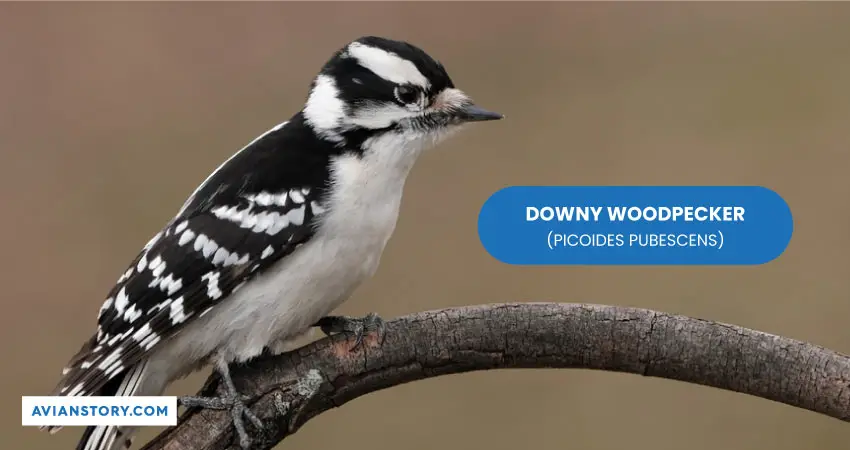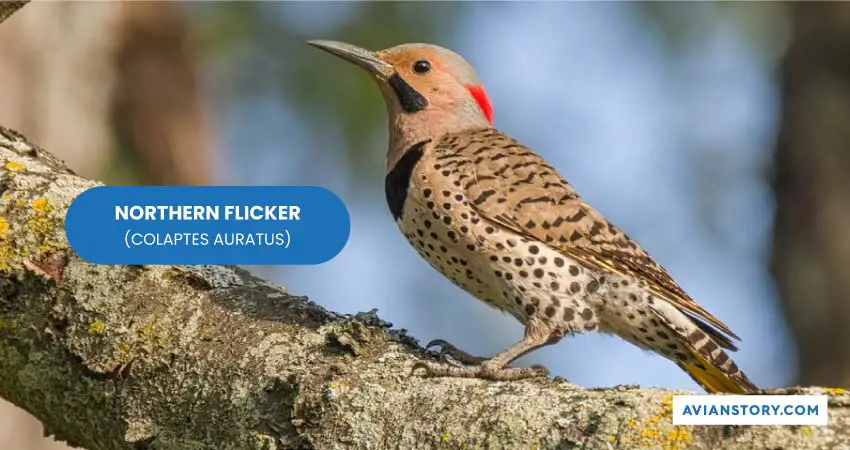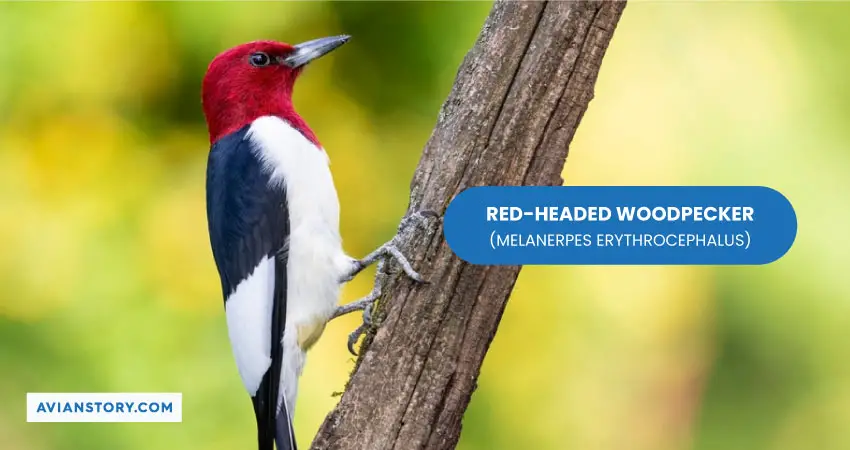Woodpeckers In New Hampshire (9 Species With Pictures)
He couldn’t sleep through the night. After all these years of waiting, finally, the dream is coming true. “Or is it not? What if the birds do not live in the area? Maybe they were just passing through.”
So much uncertainty fills the heart of the man who dreamed of feeding those rare birds one day. Now, he is about to have the time of his life for real. For, there are woodpeckers in New Hampshire, undoubtedly. They might not frequent the region, but they do visit the bird lovers now and then.
Are There Woodpeckers in New Hampshire?
Yes, the birds are there. And quite a few different species either live there or visit the area. Let’s learn about them.
9 Types of Woodpeckers in New Hampshire:
- Downy Woodpecker – Dryobates pubescens
- Northern Flicker – Colaptes auratus
- Pileated Woodpecker – Dryocopus pileatus
- Hairy Woodpecker – Leuconotopicus villosus
- Red-bellied Woodpecker – Melanerpes carolinus
- Yellow-bellied Sapsucker – Sphyrapicus varius
- Black-backed Woodpecker – Picoides arcticus
- Red-headed Woodpecker – Melanerpes erythrocephalus
- American Three-toed Woodpecker – Picoides dorsalis
1. Downy Woodpecker

- Length: 5.6-6.9 in
- Weight: 0.8-1.2 ounces
- Wingspan: 10.1-12.6 in
- Commonly Found in Mature forests
Across the US, this might be the commonest woodpecker. It’s hard to miss the off-white belly and the black body with a white shade. However, if you don’t spot a red crown, you can be sure that it’s a female. These birds feed on larvae, insects, berries, etc.
We are talking about a tiny creature. However, the sound these birds produce is audible from afar. The small bill ensures that it’s not the cousin Hairy. You can welcome a Downy to your birdfeeder with foods such as millet, seeds, and peanuts in the morning.
2. Northern Flicker

- Length: 10.9-13 in
- Weight: 3.9-6.1 ounces
- Wingspan: 17.1-20.0 in
- Commonly Found in Grounds of Old Forests
Here’s a commonly found species in New Hampshire. Its beak is stout. And the grey belly with black rounded spots is delightful to watch. When you look deep, there’s also a pinkish patch in the tail end. And the head of the bird has a brownish shade.
Here we have a migratory species, unlike most of its cousins. The amazing thing about it is the vertical walking it demonstrates. Yes, thanks to the type of feet they sport, they can move over the tree branches in any manner. And the most favorite foods they forage for are berries and seeds.
3. Pileated Woodpecker

- Length: 18-20 in
- Weight: 10-15 ounces
- Wingspan: 31-33 in
- Commonly Found in: Forests with Tall Trees
You can attract this bird to your suet feeder. However, you will be welcoming a gigantic species compared to other woodpeckers. The loud sound they produce does speak about their size. And what’s interesting is that they will eat fruits, something unusual for woodpeckers.
The body is almost fully black with a little white patch. However, there’s this large red crown that gives them an intriguing look. But, if the cheek has a black patch, you will know that it’s the egg-laying one. These birds do drums at a remarkable speed.
4. Hairy Woodpecker

- Length: 7.0-10.5 in
- Weight: 1.2-3.6 ounces
- Wingspan: 12.6-13.0 in
- Commonly Found in Burnt forests
The larger version of Downy – some like to call it. And you can’t blame them since their larger bills are the only features that reveal their true identity. The Hairy loves to feed on larvae, insects, beetles, etc. And it’s easy to attract them to suet feeders, mostly during Winter.
The male has a red mark on his head. Otherwise, both genders sport a milky white belly with a black and white body. Now, the bird has a surprisingly loud sound, considering its size. And it loves to make the old tree branches its home.
5. Red-bellied Woodpecker

- Length: 9-11 in
- Weight: 1.8-3.4 ounces
- Wingspan: 12-17 in
- Commonly Found in Oak Forests
You might be wondering – where is that red belly? Well, if you could spot the hidden red feathers, the name wouldn’t sound improper. Otherwise, it’s the vibrant redhead, black and white striped body, and the creamy or yellowish belly from a distance.
The bird is fond of oak trees the most to take as a habitat. And its food primarily is insects. Now, it would be difficult to attract this species to your bird feeder during Winter since it migrates south. At other times, you will appreciate its smooth flight high above the trees.
6. Yellow-bellied Sapsucker

- Length: 7.7-8.2 in
- Weight: 1.4-2.3 ounces
- Wingspan: 13.2-15.7 in
- Commonly Found in Coasts
You might come across a black, white, and creamy bird with a tiny red crown digging into the sap wells. It could be this species. Yes, the bird enjoys drinking the liquid as well as the insects.
It migrates a lot. Therefore, you won’t spot it frequently in the Winter unless you are near the Rocky Mountains.
During the breeding season, they might visit your backyard if the food is appetizing. Now, to distinguish between the males and females, look for the red nape on the males along with the crown. The bird’s favorite breeding lands are the coastal areas.
7. Black-backed Woodpecker

- Length: 9-9.5 in
- Weight: 2-3 ounces
- Wingspan: 14.8-16.3 in
- Commonly Found in Burnt Forests
Like the majority of the woodpeckers, this species searches for burned woodlands. Since there are abundant foods like insects and larvae, they live there throughout the year. Otherwise, you will find them in a huge number in Canada.
The bird looks unique with a plain black back. The belly is white, though with a few black spots. And if it’s a male, the crown will sport a yellow patch. It will visit the birdfeeder mostly in the morning. You can identify it by the longer bills.
8. Red-headed Woodpecker

- Length: 7.7-9.9 in
- Weight: 2.2-3.6 ounces
- Wingspan: 16.1-16.9 in
- Commonly Found in Pine Forests
Even if you are miserable in identifying birds, there’s no chance of missing this one. The solid redhead is unlike those of its cousins. Also, the sharper bill is easy to notice. These birds have a black and white bodies, with the white dominating.
What’s astonishing is that this bird can be a bit hostile while dealing with other tree inhabitants. The female lays 5-6 eggs in a tree, and the male snatches away others’ food if desperate! However, the bird might be going extinct gradually due to the loss of habitats.
Amongst its foods, berries, acorns, and seeds are the most common. It also feeds on insects.
9. American Three-toed Woodpecker

- Length: 8.4-9.2 in
- Weight: 1.8-2.5 ounces
- Wingspan: 15.1-16.2 in
- Commonly Found in Coniferous forests
This woodpecker species rarely visit New Hampshire. When Canada seems boring, they migrate in search of beetles. And since the burnt forests harbor such insects the most, you can spot them there.
You can identify the bird by its black body. There are scanty white patches on the head. And the belly has a little white area with black markings. Now, the small yellow patch on the male’s crown will help distinguish the males from the females.
Final Words
When the morning newspaper read ‘woodpeckers in New Hampshire’ as a headline for the first time, the bird lovers were on cloud nine. For these birds, do create a show with their drumming, flight, and beauty. And once you watch them flying around the bird feeders, you will also be a bragging bird lover.
Woodpeckers Found in Nearby States of New Hampshire:
Resources:
- https://nhpbs.org/wild/pileatedwoodpecker.asp
- https://www.wildlife.state.nh.us/pubs/documents/samples/woodpeckers.pdf
